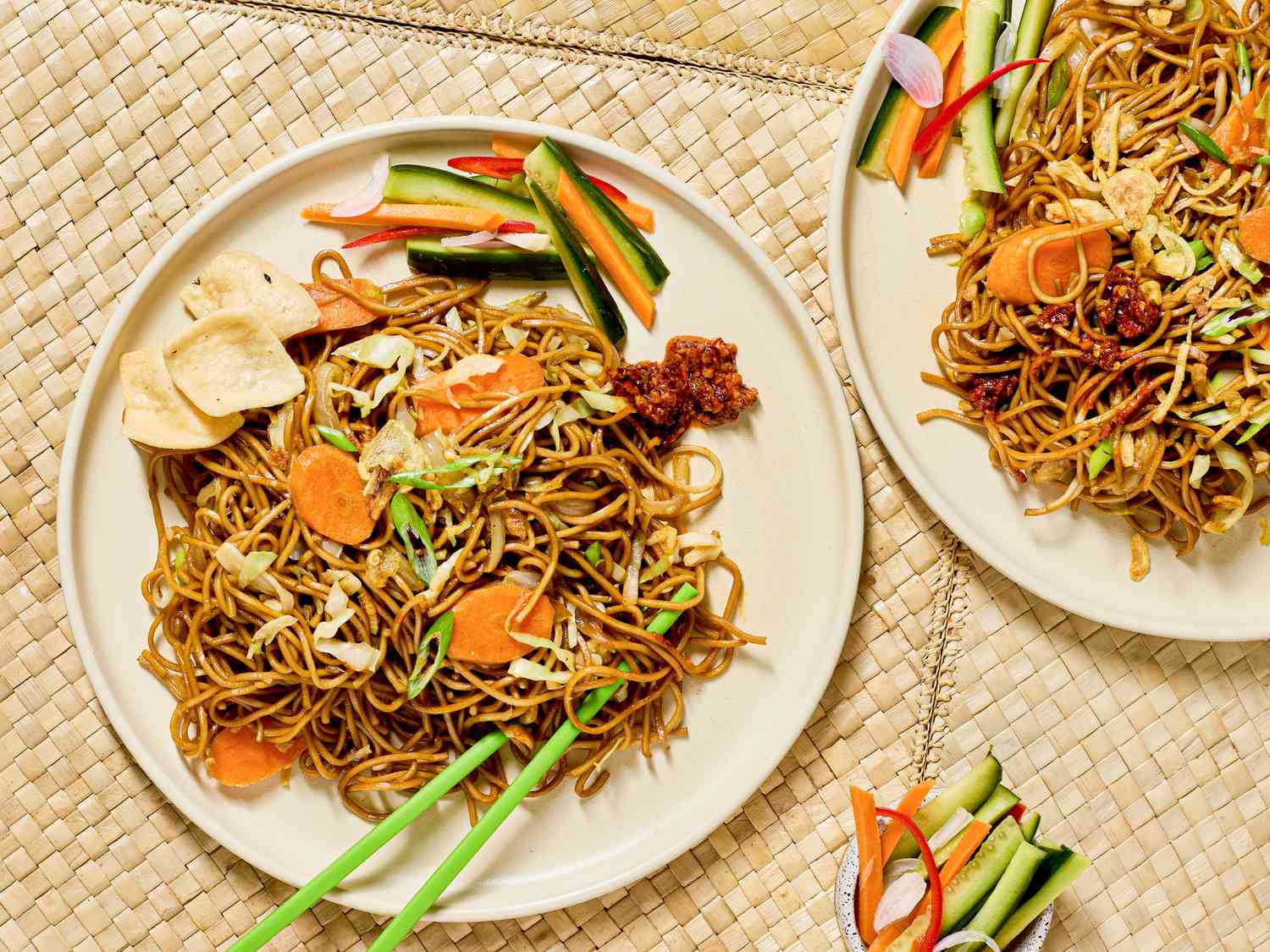
Why It Works
- Undercooking the noodles ensures that they keep springy and agency within the completed dish.
- Dressing the noodles forward permits the flavors to penetrate whereas coating them evenly.
Comprised of thin wheat or egg noodles stir-fried with garlic, shallots, greens, eggs, and meat or seafood, mie goreng is certainly one of Indonesia’s most well-known dishes. The candy, salty noodles are extensively eaten throughout the Indonesian archipelago, with variations aplenty primarily based on area and particular person desire. Throughout the nation, you’ll discover renditions like mie goreng sapi (stir-fried noodles with beef) and kwetiau goreng jawa (Javanese stir-fried noodles ready with rice noodles). In northern Indonesia, there’s mie goreng Aceh, a dish of thicker noodles with a spicy, curry-like taste that’s named for the province it comes from. Mie goreng can be eaten in different elements of Southeast Asia, like Singapore and Malaysia.
It’s seemingly that mie goreng was impressed by fried noodles like chow mein that Chinese language immigrants introduced over throughout the 18th century, when many emigrated to Indonesia for alternatives within the mining business. Although chow mein is usually made with gentle and darkish soy sauces, Indonesian mie goreng requires kecap manis, a thick, candy soy sauce important to many Indonesian dishes.
The components in mie goreng can differ. For those who order mie goreng at a warung (roadside meals stall), you could get a easy dish of noodles, eggs, and nothing else. Sometimes, greens like carrots and cabbage are used. Nonetheless, relying on the prepare dinner’s private desire and market availability, you could discover variations with bean sprouts, mustard greens, or spinach. As a result of Indonesia is a largely Muslim nation, mie goreng doesn’t often include pork. The preferred protein selections are hen and shrimp, however my household enjoys fish- or beef-balls too. The noodles are at all times served with fried shallots and crunchy shrimp crackers, which can simply be my favourite half.
Since I stay within the U.S. and may’t simply pop right into a warung to get my mie goreng repair, I make it at residence. Taking inspiration from mie goreng Jawa (Javanese fried noodles), I season my noodles with bumbu dasar putih (a fundamental white spice paste that’s used as a basis in lots of Indonesian dishes), kecap manis, and soy sauce. As for the opposite components, all of it will depend on what I discover on the market or have in my kitchen.
Though I can’t obtain correct “wok hei” (a Cantonese time period used to explain the smoky, charred end of a stir-fried dish) at residence, I do comply with a couple of tips to keep away from a wok stuffed with steamed, soggy noodles: I prepare dinner smaller parts at a time to keep away from overcrowding the pan, and monitor the warmth rigorously, adjusting the burner as wanted so there’s a fixed sizzle. The consequence? Aromatic stir-fried noodles with tender greens that remind me of the mie goreng I used to take pleasure in at roadside stalls in Indonesia. Served with fried shallots, sambal oelek, and crisp shrimp crackers, mie goreng is a satisfying style of residence.
Critical Eats / Melati Citrawireja
Trending Merchandise










